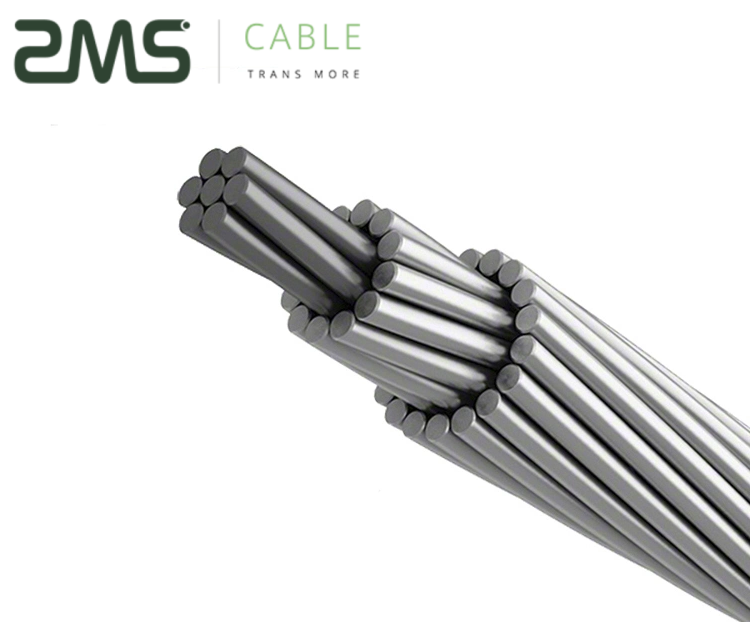ACSR and TACSR drivers
ACSR (Aluminium Conductor Steel Reinforced) is a high performance bare conductor used for overhead transmission lines. It is composed of a galvanized steel core and high purity aluminum strands. The steel core provides mechanical strength and the aluminum layer ensures current transport. The structure of the ACSR cable can be adapted according to the specific span and climatic conditions. This conductor is widely used for overhead lines of 110kV and above, offering great mechanical resistance, good conductivity and high durability against corrosion. ACSR cable is particularly suitable for long distances, with large spans and areas subject to severe climatic conditions such as heavy frost.
ZMS CABLE supplies ACSR conductors in a wide range of sections and structures, with customization options and third-party quality testing reports, compliant with IEC standards, ASTM ou BS.
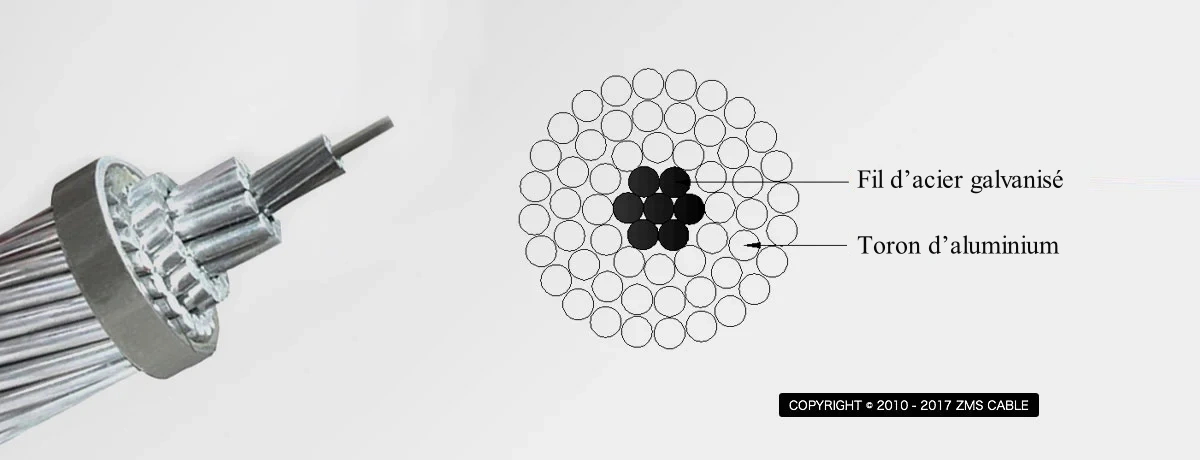
Construction
| Part | Material / Process | Function |
| Soul (Core) | High tensile galvanized steel wire (Class A/B/C) or aluminum plated steel (aluminium-clad steel) or aluminum-magnesium alloy coated steel | Supports mechanical traction, provides high tensile strength, reduces cable sag |
| Couches d’aluminium (Aluminium Strands) | High purity aluminum strands (generally 1350-H19 ; 1370-H19 en Europe), concentric stranding, multi-layer structure | Conducts electric current, ensures good conductivity, contributes to electrical performance |
| Anti-corrosion treatment (Coating/Protection) | Galvanized steel wire or aluminum coating + magnesium + manganese, lubrication or greasing of the core, possible impregnation | Protects the core against corrosion, extends lifespan, prevents humidity and chemical attack |
| Toronnage structure (Stranding) | Concentric layer stranding, aluminum and steel wires stranded in opposite directions to balance the torque ; variable number of layers and diameter (ex. 6/1, 30/7, 72/7) | Maintains structural stability, optimizes mechanical performance, reduces vibration and surface electric field concentrations |
Standard
FROM 48204, IN 50182
ACSR cable parameters
| Setting | ACSR Standard | ACSS / HTLS (for high temperature applications) |
| Material & purity of aluminum | Aluminum 1350‑H19 or 1370‑H19, purity ≥99.5% | Identical |
| Conductivity of aluminum | ≥61% IACS | Identical |
| Steel core type & coating | Galvanized steel GA2–GA5 (class A/B/C galvanized coating) | 5% Al‑Rare Earth alloy galvanized steel or aluminum clad steel |
| Tensile strength of steel core | 1 200–1 600 MPa (depending on the type) | Similar or better |
| Allowed continuous service temperature | 75 °C (limit due to annealing of aluminum) | 150–210 °C (certain products up to 250°C) |
| Maximum peak temperature | ≈ 100–120 °C (limit due to deflection and mechanical resistance) | ≥ 250 °C (emergency use) |
| Maximum designed range | ≥ 500 m (major crossings — rivers, valleys) | Identical |
| Relative linear mass | Approximately 30% of the weight of a steel conductor of equivalent section | Identical |
| Ohmic resistance at 20°C | 0,018–0.7Ω/km (depending on the model, par ex. 0,016–0.4Ω/km) | Slightly higher (annealed aluminum) |
| Current carrying capacity at 75°C | ≈ 100–1 043 A (According to the section) | 75 °C : up to 972A ; 150 °C : 1 512 A ; 250 °C : 1 953 A |
| Lifespan in corrosive environment | ≥ 25 ans (galvanized steel core + aluminum oxide layer) | Improved, thicker coating |
| International standards | ASTM B230/B232/B498/B500, IEC 61089, CSA, FROM, etc. | + ASTM B609/B856/B958, etc. |
Noticed :
- For applications above 90°C in continuous operation, it is recommended to use an ACSS or HTLS instead of a standard ACSR.
- These data are indicative values, to be specified according to the project and local standards.
Typical applications
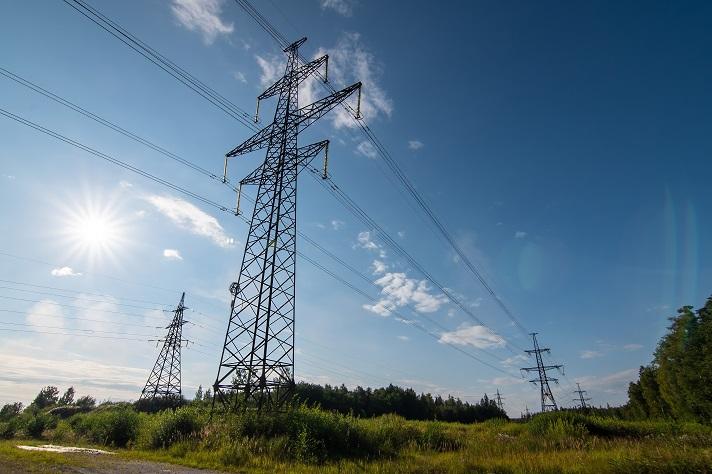
- High voltage transmission lines : Main electrical networks of 220 kV and more, connection lines to transformer stations.
- Large-scale projects : River or valley crossings (For example, ACSR/AW used as shield cable).
- Connection of renewable energies : High resistance output cables for wind farms and photovoltaic power plants.
Technical data
| Reference (nominal aluminum/steel section) | Section(mm²) | Towering | Total diameter (mm) | Nominal resistance | Electrical resistance at 20℃ | Linear mass of the conductor (kg/km) | Current carrying capacity | ||||||
| Al | Steel | Total | Soul Al | Steel core | Steel | Total | kN | Ω/km | Al | Steel | Total | A | |
| 16/2,5 | 15,3 | 2,55 | 17,85 | 6×1,80 | 1×1,80 | 1,8 | 5,4 | 5,95 | 18,792 | 42 | 20 | 62 | 90 |
| 25/40 | 23,8 | 4,0 | 27,8 | 6×2,25 | 1×2,25 | 2,25 | 6,8 | 9,2 | 12,027 | 66 | 31 | 97 | 125 |
| 35/6 | 34,3 | 5,7 | 40 | 6×2,70 | 1×2,70 | 2,7 | 8,1 | 12,65 | 0,8353 | 95 | 45 | 140 | 145 |
| 44/32 | 44 | 31,7 | 75,7 | 7×2,40 | 7×2,40 | 7,2 | 11,2 | 45,0 | 0,6566 | 124 | 248 | 372 | 160 |
| 50/8 | 48,3 | 8,0 | 56,3 | 6×3,20 | 1×3,20 | 3,2 | 9,6 | 17,1 | 0,5946 | 133 | 63 | 196 | 170 |
| 50/30 | 51,2 | 29,8 | 81 | 12×2,33 | 7×2,33 | 6,99 | 11,7 | 43,8 | 0,5644 | 143 | 235 | 378 | 170 |
| 70/12 | 69,9 | 11,4 | 81,3 | 26×1,85 | 7×1,44 | 4,32 | 11,7 | 26,8 | 0,413 | 194 | 90 | 284 | 290 |
| 95/15 | 94,4 | 15,3 | 109,7 | 26×2,15 | 7×1,67 | 5,01 | 13,6 | 35,75 | 0,3058 | 262 | 121 | 383 | 350 |
| 95/55 | 96,5 | 56,3 | 152,8 | 12×3,20 | 7×3,20 | 9,6 | 16,0 | 79,35 | 0.2992 | 269 | 443 | 712 | 350 |
| 105/75 | 105,7 | 775,5 | 181,5 | 14×3,10 | 19×2,25 | 11,25 | 17,5 | 108,45 | 0,2733 | 295 | 596 | 891 | 370 |
| 120/20 | 161,6 | 19,8 | 141,4 | 26×2,44 | 7×1,90 | 5,7 | 15,5 | 45,65 | 0,2374 | 338 | 156 | 494 | 410 |
| 120/70 | 122 | 71,3 | 193,3 | 12×3,60 | 7×3,60 | 10,8 | 18,0 | 100 | 0,2364 | 341 | 560 | 901 | 410 |
| 125/30 | 127,9 | 29,8 | 157,7 | 30×2,33 | 7×2,33 | 6,99 | 16,1 | 57,6 | 0,2259 | 356 | 235 | 591 | 425 |
| 150/25 | 148,9 | 24,2 | 173,1 | 26×2,70 | 7×2,10 | 6,31 | 17,1 | 55,25 | 0,1939 | 414 | 191 | 605 | 470 |
| 170/40 | 171,8 | 40,1 | 211,9 | 30×2,70 | 7×2,70 | 8,10 | 118,9 | 76,75 | 0,1682 | 479 | 315 | 794 | 520 |
| 185/30 | 1838 | 29,8 | 213,6 | 26×3,00 | 7×2,33 | 6,99 | 19,0 | 66,2 | 0,1571 | 511 | 235 | 746 | 535 |
| 210/35 | 209,1 | 34,1 | 243,2 | 26×3,20 | 7×2,49 | 7,47 | 20,3 | 74,9 | 0,138 | 583 | 267 | 850 | 580 |
| 210/50 | 212,1 | 49,5 | 261,6 | 30×3,00 | 7×3,00 | 9,00 | 21,0 | 93,9 | 0,1363 | 593 | 388 | 981 | 610 |
| 230/30 | 230,9 | 29,8 | 260,7 | 24×3,50 | 7×2,33 | 6,99 | 21,0 | 73,1 | 0,1249 | 642 | 235 | 877 | 630 |
| 240/40 | 243 | 39,5 | 282,5 | 26×3,45 | 7×2,68 | 8,04 | 21,9 | 86,4 | 0,1188 | 677 | 310 | 987 | 645 |
| 265/35 | 263,7 | 34,1 | 297,8 | 24×3,74 | 7×2,49 | 7,47 | 22,4 | 83,1 | 0,1117 | 735 | 267 | 1002 | 680 |
| 300/50 | 304,3 | 49,5 | 353,7 | 26×3,86 | 7×3,00 | 9,00 | 24,5 | 107 | 0,0949 | 848 | 388 | 1236 | 740 |
Proficiency : the ACSR conductor in heat-resistant version
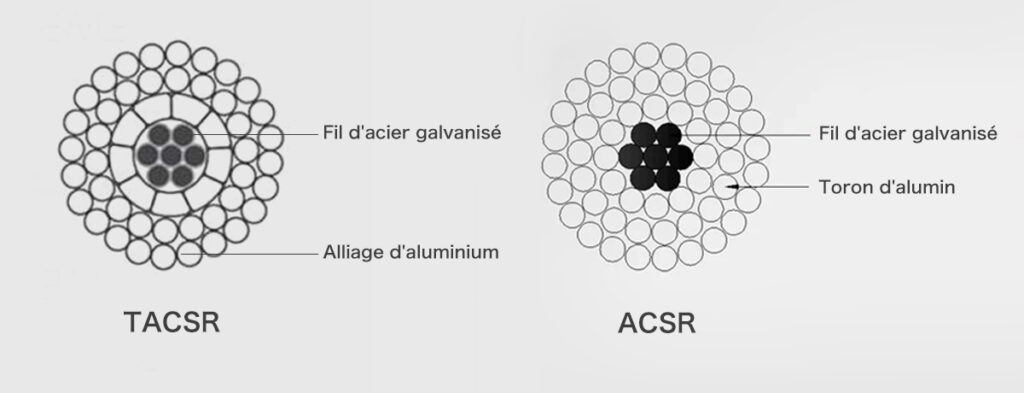
Proficiency : Thermal-resistant Aluminium Conductor Steel Reinforced
Structure : the outer layer is made of a heat-resistant aluminum alloy (such as aluminum-zirconium alloy), while the core is made of galvanized steel wires.
Benefits : excellent heat resistance ; ability to withstand higher operating temperatures (generally between 150°C and 210°C) ; allows an increase in line capacity under existing pylon conditions.
Applications : suitable for high temperature regions and the modernization of medium and short range lines for capacity increase.
Comparaison des câbles ACSR avec d'autres câbles
ACSR vs TACSR Driver
| Setting | ACSR (Aluminium Conductor Steel Reinforced) | Proficiency (Thermal-resistant Aluminium Conductor Steel Reinforced) |
| Structure | Brins an aluminum standard + galvanized steel wire core | Heat-resistant aluminum alloy strands + galvanized steel wire core |
| Conductor material | EC quality aluminum | Alliage aluminium-zirconium (ex. Al-Zr) or other heat-resistant aluminum alloy |
| Eligible service temperature | 70 ~ 80°C (standard) | 150 ~ 210°C (thermorestelling) |
| Current capacity | Standard | 1,5 has 2 times greater than that of an ACSR of the same section |
| Thermal expansion | Strong increase in arrow with temperature | Heat-resistant design, lower deflection variation |
| Weight | Standard | Slightly heavier than ACSR (negligible density difference) |
| Typical applications | Conventional transmission lines, short and medium airlines | High temperature regions, capacity increase projects, renovation of old lines |
| Cost | Economic | Slightly higher than ACSR |
| Pose & maintenance | Proven technology, widely distributed | Similar to ACSR, easy replacement and good compatibility |
Résumé :
The driver Proficiency is an improved version of the classic ACSR, using a heat-resistant aluminum alloy in place of standard aluminum. This design significantly increases the operating temperature and current capacity. TACSR cable is particularly suitable for high temperature areas or transmission lines requiring increased capacity.
ACSR vs HTLS Drivers
| Features | ACSR | HTLS drivers |
| Full name | Aluminium Conductor Steel Reinforced | High Temperature Low Sag Conductors (ACSS, Proficiency, ACCC, ACCR, etc.) |
| Service temperature range | 70–90°C (max. ~100°C) | 150–250°C depending on type |
| Conception | Galvanized steel soul + pure aluminum outer strands | Improved hearts : special steel, Invar, composite, ACCC ; aluminium trapézoïdal possible |
| Arrow | Largest high temperature boom | Low deflection even at high temperatures |
| Current carrying capacity | Standard | Increased capacity (+30–100%) |
| Cost | More economical | More expensive but optimized for existing lines |
| Applications | Standard electricity transmission lines | Replacement/increase in capacity without changing pylons |
| Examples | ACSR standard | ACSS, ACSS/TW, Proficiency, GTACSR, ACCC, ACCR, Invar |
Why choose ZMS ACSR ?
- Performance structures : aluminium ≥ 99,6 % (conductivity ≥61% IACS) + galvanized steel core (resistance 1200–1600MPa) = range > 500 m, minimum deflection.
- High environmental resistance : continuous service temperature 70–90°C, reduced density (30 % of an all-steel cable), lifetime > 25 years in industrial or coastal areas.
- Optimal profitability : lower cost of aluminum than copper = savings of up to 40% for the same current carrying capacity, perfect for long distance networks.
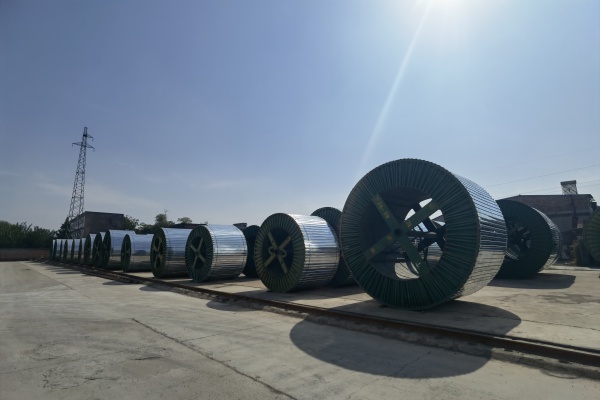

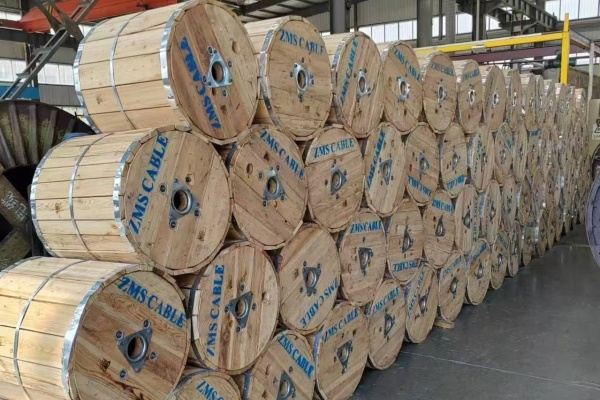
Transport – ZMS CABLE
- The cables are packed on treated wooden towns or metal drums, With plastic film or BOPP for humidity protection.
- We offer maritime transport in 20ft or 40ft container, Depending on the control volume.
- Land transport is available for regional or local deliveries (Depending on the destinations).
- On demand, We also provide air transport for urgent orders.
- All necessary export documents are provided : commercial invoice, packing list, original certificate, documents douaniers, etc.

